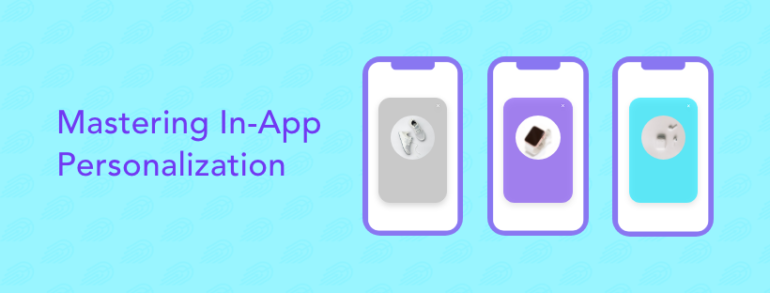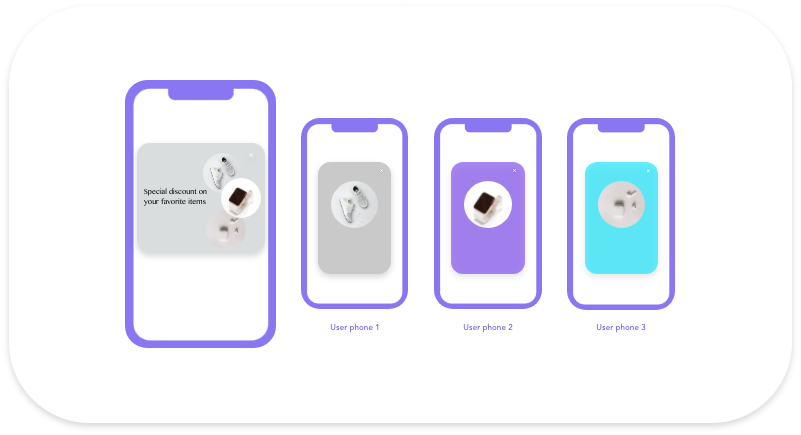In the dynamic landscape of mobile apps, businesses are increasingly recognizing the importance of in-app campaigns to engage and retain users. In-app personalization has become the tool for enhancing user experience and driving engagement.
However, mastering the art of personalization requires a careful balance between meeting user expectations and respecting their privacy, being able to tailor in-app campaigns to individual user preferences and behaviors.
In this article, we’ll explore the significance of in-app campaign personalization and how it can be a game-changer for businesses.
- Understanding the User:
The first step in effective personalization is understanding your users. Analyzing user data, such as behavior, preferences, and demographics, provides valuable insights. By leveraging advanced analytics tools, businesses can create user personas, allowing them to segment their audience effectively.
- Tailoring Content and Messaging:
Once user segments are identified, businesses can tailor in-app content and messaging to resonate with specific groups. Whether it’s personalized recommendations, exclusive offers, or content suggestions, providing users with content that aligns with their interests increases engagement and conversion rates.
- Contextual Personalization:
In-app campaigns should also take into account the user’s context, such as location, time of day, and device. For example, a retail app might send a notification about a special promotion when a user is near one of the store locations. Contextual personalization enhances the relevance of the message and increases the likelihood of user interaction.
- Behavioral Triggers:
Incorporating behavioral triggers into in-app campaigns allows businesses to respond to user actions in real-time. For instance, if a user frequently browses a specific category but hasn’t made a purchase, a personalized campaign could offer a discount on items in that category, encouraging conversion.
- A/B Testing for Optimization:
Personalization doesn’t end with the initial implementation. A/B testing is a crucial component of refining in-app campaigns. By testing different variations of content, messaging, and timing, businesses can continually optimize their campaigns based on user responses, ensuring that personalization efforts yield the best results.
- Building Trust and Loyalty:
Personalization not only enhances user experience but also fosters a sense of trust and loyalty. When users feel that an app understands their needs and preferences, they are more likely to remain engaged and loyal to the brand. Personalization builds a stronger emotional connection between the user and the app.
- Privacy and Consent:
While personalization is powerful, it’s essential to prioritize user privacy. Obtaining explicit consent for data usage and being transparent about how personal data is handled builds trust. Businesses must adhere to privacy regulations and ethical practices to maintain a positive relationship with users.
The Do’s:
- Understand Your Users:
- Invest time in thorough user data analysis to understand preferences, behaviors, and demographics, understanding your users is the foundation for effective personalization.
- Segment Your Audience:
- Create user segments based on common characteristics and behaviors, segmentation allows for targeted and relevant personalization efforts.
- Tailor Content and Messaging:
- Customize in-app content and messages to align with user interests and preferences, applying tailored content increases user engagement and satisfaction.
- Utilize Contextual Personalization:
- Consider the user’s context, such as location, time of day, and device, for more relevant campaigns, because contextual personalization enhances the user experience by providing timely and location-specific information.
- Incorporate Behavioral Triggers:
- Implement campaigns based on user actions in real-time, behavioral triggers allow for dynamic responses, increasing the chances of conversion.
- A/B Test for Optimization:
- Continuously test variations of content, messaging, and timing to ensures ongoing optimization and improving the effectiveness of personalization efforts.
- Prioritize Privacy and Consent:
- Obtain explicit user consent for data usage and clearly communicate privacy practices, respecting user privacy builds trust and compliance with data protection regulations.
The Don’ts:
- Overwhelm with Information:
- Flood users with excessive notifications or information, can lead to frustration and app disengagement.
- Assume Universal Preferences:
- Rely on generic assumptions about user preferences, personalization is effective when it’s truly tailored to individual user behavior and preferences.
- Neglect Data Security:
- Compromise on data security or mishandle user data, breaches can severely damage user trust and harm your brand reputation.
- Ignore User Feedback:
- Disregard user feedback on personalization efforts, user feedback is invaluable for refining and improving personalization strategies.
- Violate Privacy Regulations:
- Ignore or violate privacy regulations and guidelines, can lead to legal repercussions and erode user trust.
The future of successful in-app campaigns lies in the ability to connect with users on an individual level, fostering trust, loyalty, and long-term relationships. Having a strategic approach that prioritizes user understanding, targeted segmentation, and ethical practices.
By following these do’s and avoiding the corresponding don’ts, businesses can create a personalized experience that delights users while maintaining their trust and privacy.
Working with best partners to strike the right balance, you will ensure a win-win scenario for both businesses and app users. Count on our appreach team of experts to best assist you on reaching your campaigns goals and ROAS.
Appreach Team

